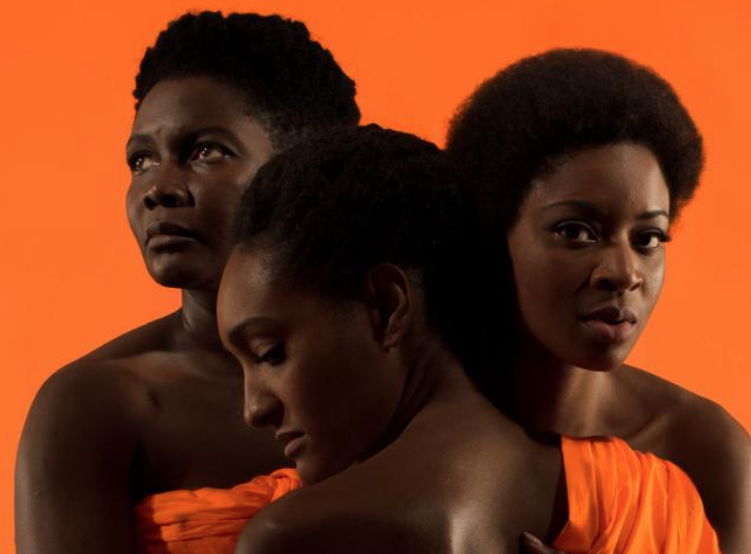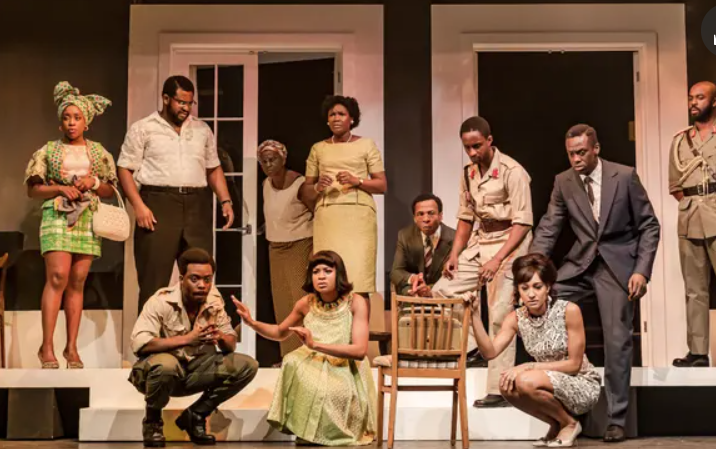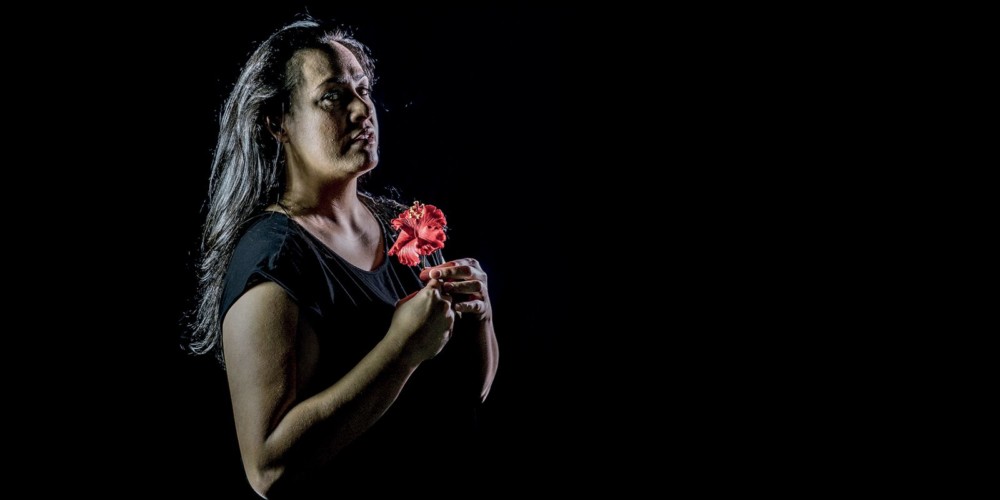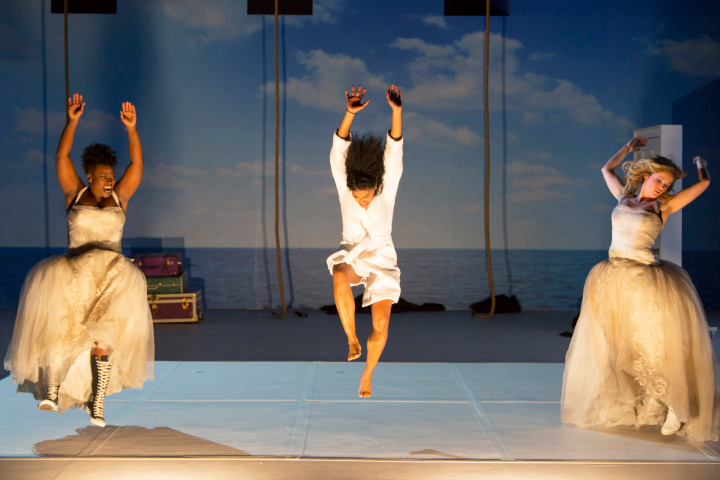by Carol Rocamora

“To Lagos!” Inua Ellams’ The Three Sisters – National Theatre At Home
Ever since they were written over 100 years ago, the remarkable plays of Anton Chekhov have inspired countless versions, variations, interpretations and adaptations – set in a wide variety of places. There’s Vanya on 42nd Street, set in New York City. I even saw an Uncle Vanya in Prague that was set in West Texas. I’ve seen The Cherry Orchard staged on oriental carpets (Peter Brook’s, in Paris) and another on a billiard table!
As for The Three Sisters, Richard Nelson set his own version in Rhinebeck, NY, featuring the Apple Family (his update of Chekhov’s Prozorovs). His four-play cycle was performed at the Public Theatre from 2010-2013. This summer during the pandemic, he brought the Apple family back for a three-play cycle on ZOOM.
But Ilua Ellams’ The Three Sisters (2019), now streaming on-line at National Theatre At Home, is a special case. Of all the adaptations I’ve seen over the years (I’m a Chekhov translator, so I see as many as possible), Ellams is the truest and most faithful to the original plot and dialogue, down to specific details. So how is it that the result is so different from Chekhov’s? And does it matter, in judging Ellams’ play on its own merit?
Let me begin by saying that Ellams’ The Three Sisters is an excellent play, eloquent, passionate, and inspiring – given a superb production at the National Theatre in 2019 directed by Nadia Fall. Set in Nigeria in the 1960s during the Biafran War, the cast includes all of Chekhov’s original characters (plus two additions). Like Chekhov’s Prozorov family, Ellam’s three sisters and their brother have left the capital – in their case, Lagos – and are living in the provinces, longing to return to city life. (“To Moscow! To Moscow!” cry Chekhov’s sisters, whereas Ellams’ sisters cry: “To Lagos”!) Both Chekhov’s and Ellams’ sisters are surrounded by admiring soldiers, and their love lives are mirror images. Indeed, Ellams’ dialogue is faithful to the original, scene by scene. But there the similarities end.
The greatest difference – and it’s a definitive one – is that Chekhov’s Prozorov sisters live in a void. It’s as if time has stopped in their tiny provincial town, somewhere at the edge of the Ural mountains, far away from the Moscow they dream of. Chekhov’s intent is to show how people are lost in the details of their daily lives while time passes, inexorably, and the world changes beyond their control or comprehension. Yes, there are soldiers in their remote town, but there’s no mention of why they are there or what they are doing. And when the troops leave, their destination is unclear. Meanwhile, time passes, loves are lost, dreams are dashed, they’ll never return to Moscow – and yet Chekhov’s sisters endure and live on. There’s no mention of a Russia in decline, or a glimmer of the first Revolution which would occur only four years after the play takes place.


Not so in Ellams’ The Three Sisters. His version is very much grounded in the specifics of the Biafran conflict (1967-70). His three sisters are part of the Igbo elite, caught in the crossfires of a Nigerian civil war. They fled the conflict in Lagos, but it has caught up with them in the provinces. The troops in their village of Owerri are very active – unlike Chekhov’s troops, who seem unaware of their purpose. In Ellams’ version, unlike Chekhov’s play, there is much talk of politics. The oldest sister Lola, like Chekhov’s Olga, is a schoolteacher – but unlike Olga, Ellams’ Lola is an activist, pleading for non-violence. She’s also a spokesperson against British colonialism, another strong theme in Ellams’ play. While Chekhov’s officers philosophize vaguely about life in hundreds – even thousands – of years, Ellams’ officers talk concretely about the future of Africa.
Clearly, Ellams has a historical/political agenda, whereas Chekhov does not – except to write about the tragicomedy of “life as it is.” In contrast, Ellams’ version tends toward the melodramatic. Instead of a fire in Act III, as in Chekhov’s original, there are bombings in Ellams’ version, with extra actors playing villagers. To enhance the rural Nigerian atmosphere, Ellams adds a mysterious folk character – a “Chant Poet” (played by Amarchi Attamah), who wanders through the scenes, singing in a native dialect. Her mystical/spiritual presence haunts the play, increasing as the action progresses.
High praise goes to Nadia Fall’s sweeping directorial vision and the entire production team – including Katrina Lindsay’s colorful set and costumes, Peter Mumford’s lighting design, and Michael Henry’s musical direction.
The three sisters (Sara Niles as Lolo, Natalie Simpson as Nne Chukwu, and Racheal Ofori as Udo) give fine performances, as does the entire ensemble.
So does it matter that Ellams’ “version” of The Three Sisters is ultimately a totally independent work on its own? Not at all. Chekhov will continue to inspire works that not only depict “life as it is” but also “life as it should be” – plays in which characters like Chekhov’s Colonel Vershinin or Ellams’ Colonel Ikemba dream of a future when – in their hopeful, hopeless words – “we shall find happiness.”
Inua Ellams’ The Three Sisters: After Chekhov a Royal National Theatre production, directed by Nadia Fall, now streaming online at ntathome





















